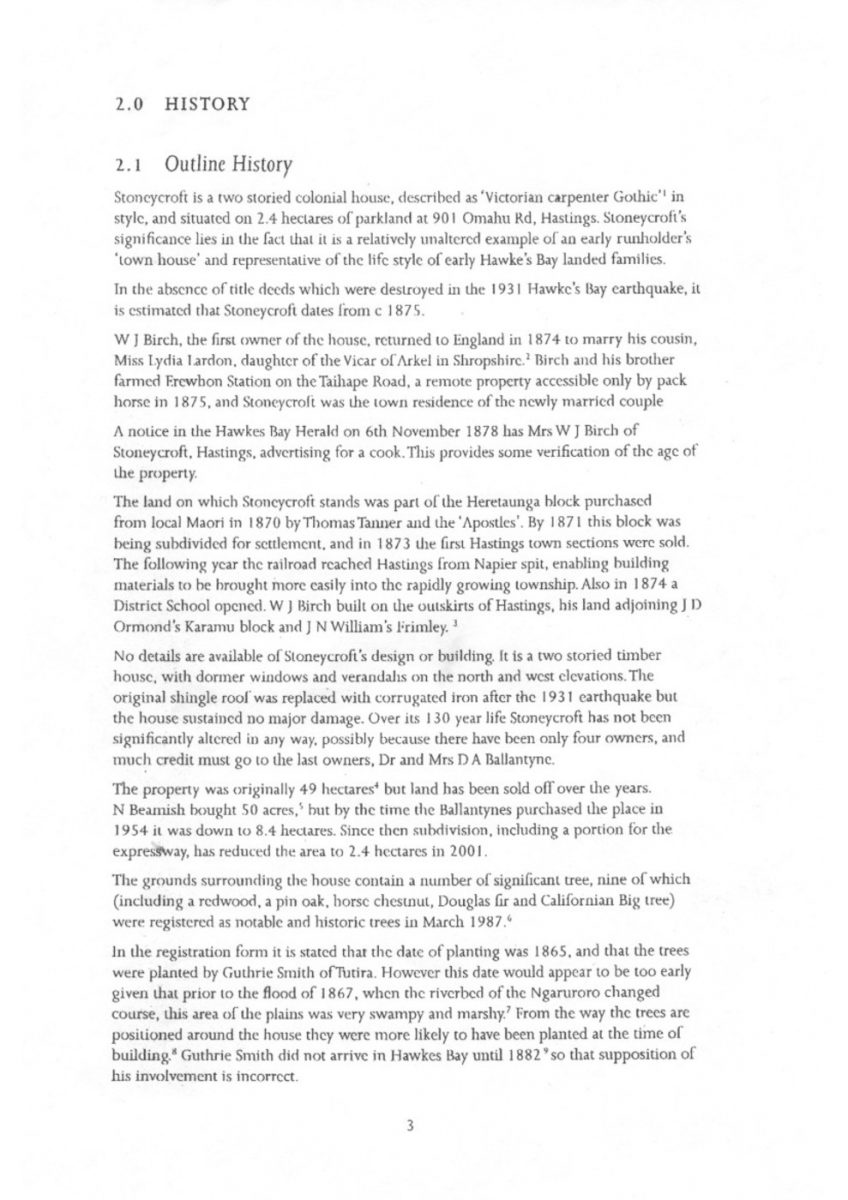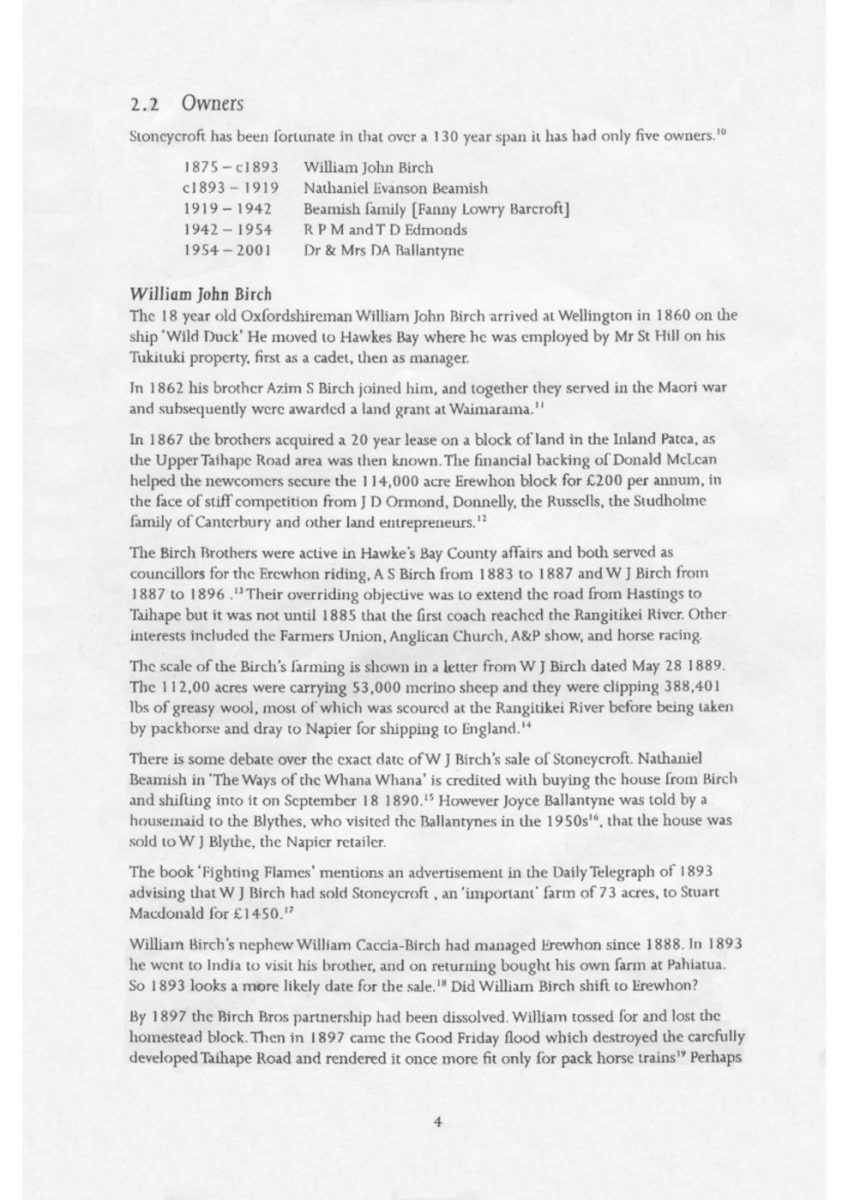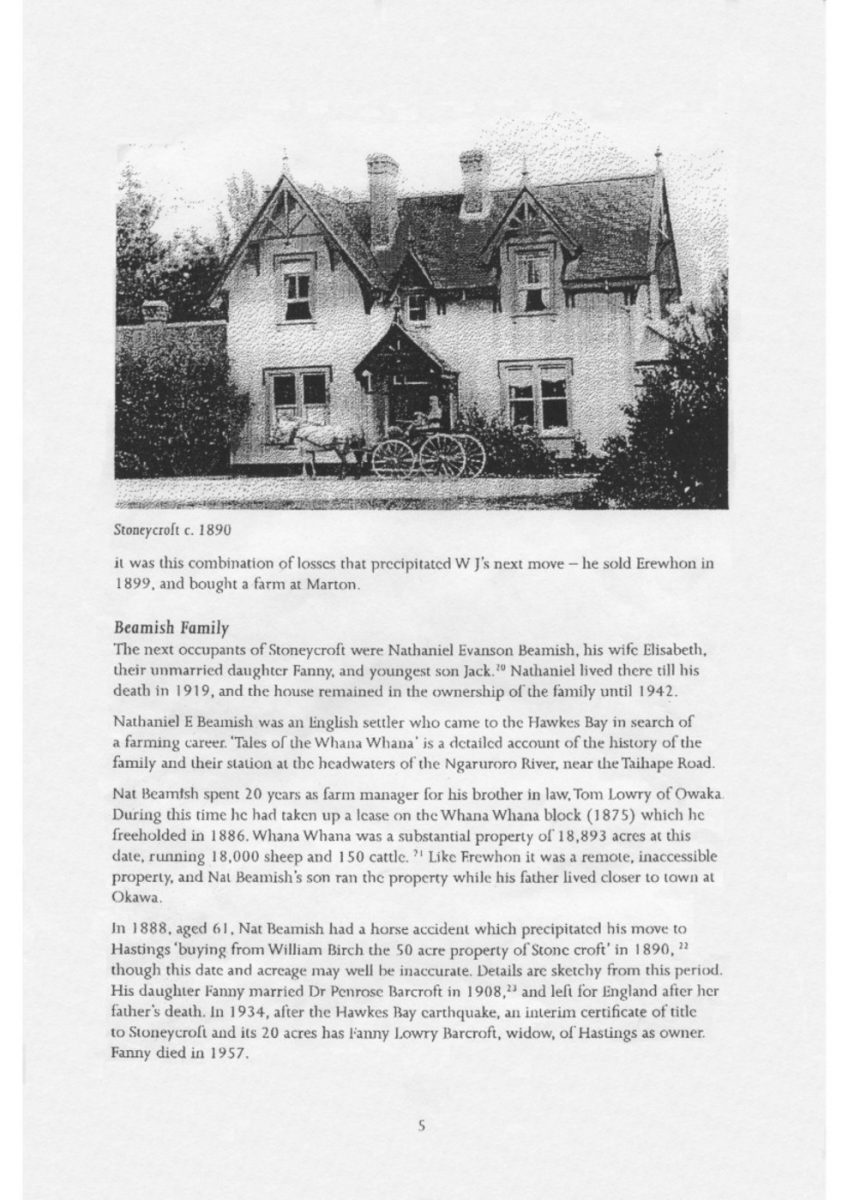Page 4
2.2 Owners
Stoneycroft has been fortunate in that over a 130 year span it has had only five owners.
1875 – c1893 William John Birch
c1893 – 1919 Nathaniel Evanson Beamish.
1919 – 1942 Beamish family [Fanny Lowry Barcroft]
[The Harrison Family owned Stoneycroft from 1924 to 1942 – HBKB]
1942 – 1954 R P M and T D Edmonds
1954 – 2001 [2003] Dr & Mrs DA Ballantyne
William John Birch
The 18 year old Oxfordshirerman William John Birch arrived at Wellington in 1860 on the ship ‘Wild Duck’. He moved to Hawkes Bay where he was employed by Mr St Hill on his Tukituki property. first as a cadet, then as manager.
In 1862 his brother Azim S Birch joined him, and together they served in the Maori war and subsequently were awarded a land grant at Waimarama.
In 1867 the brothers acquired a 20 year lease on a block of land in the Inland Patea, as the Upper Taihape Road area was then known. The financial backing of Donald McLean helped the newcomers secure the 114,000 acre Erewhon block for £200 per annum, in the face of stiff competition from J D Ormond, Donnelly, the Russells, the Studholme family of Canterbury and other land entrepreneurs.
The Birch Brothers were active in Hawke’s Bay County affairs and both served as councillors for the Erewhon riding, A S Birch from 1883 to 1887 and W J Birch from 1887 to 1896. Their overriding objective was to extend the road from Hastings to Taihape but it was not until 1885 that the first coach reached the Rangitikei River. Other interests included the Farmers Union, Anglican Church, A&P show, and horse racing.
The scale of the Birch’s farming is shown in a letter from W J Birch dated May 28 1889. The 112,00 [112,000] acres were carrying 53,000 merino sheep and they were clipping 388,401 lbs of greasy wool, most of which was scoured at the Rangitikei River before being taken by packhorse and dray to Napier for shipping to England.
There is some debate over the exact date of W J Birch’s sale of Stoneycroft. Nathaniel Beamish in ‘The Ways of the Whana Whana’ is credited with buying the house from Birch and shifting into it on September 18 1890. However Joyce Ballantyne was told by a housemaid to the Blythes, who visited the Ballantynes in the 1950s, that the house was sold to W J Blythe, the Napier retailer.
The book ‘Fighting Flames’ mentions an advertisement in the Daily Telegraph of 1893 advising that W J Birch had sold Stoneycroft, an ‘important’ farm of 73 acres, to Stuart Macdonald for £1450.
William Birch ‘s nephew William Caccia-Birch had managed Erewhon since 1888. In 1893 he went to India to visit his brother, and on returning bought his own farm at Pahiatua. So 1893 looks a more likely date for the sale. Did William Birch shift to Erewhon?
By 1897 the Birch Bros partnership had been dissolved. William tossed for and lost the homestead block. Then in 1897 came the Good Friday flood which destroyed the carefully developed Taihape Road and rendered it once more fit only for pack horse trains. Perhaps















Do you know something about this record?
Please note we cannot verify the accuracy of any information posted by the community.